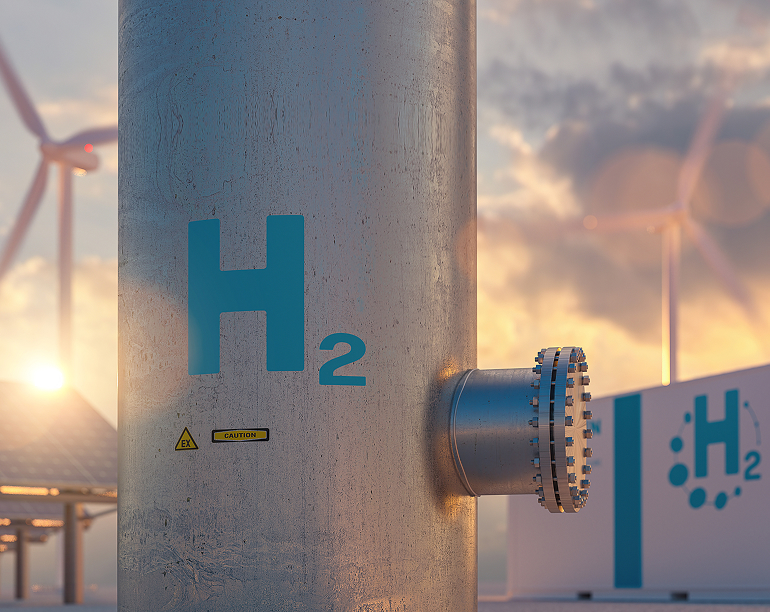
Advancing Low-Carbon-Intensity Hydrogen for a Carbon-Neutral Economy by 2050
Low-carbon-intensity hydrogen in its molecular form (H₂) is emerging as a critical tool for achieving carbon-neutrality. Although it is currently used for things like petroleum refining and chemical manufacturing, low-carbon intensity hydrogen’s energy density and versatility make it a promising resource for new applications.
Low-carbon-intensity hydrogen has significant potential to reduce emissions in heavy transport, high-temperature industrial processes, and long-duration energy storage. It could also serve as an alternative to coal in metallurgy and as a building block for synthetic fuels and chemicals.

Pathways in Progress
Policy and Incentive Design
AzCaNE aims to collaborate with federal and state agencies to inform on low-carbon-intensity hydrogen policy, incentives and opportunities. The center facilitates coordination to accelerate deployment of technologies, safeguard environmental integrity and spur economic growth.
Cross-sector Collaboration
Through periodic roundtable discussions, working groups and workshops, AzCaNE unites utilities, universities, government entities, non-profit organizations and for-profit representatives to establish shared understanding, align goals, share data and move ideas forward.
Strategic Roadmaps and Analysis
AzCaNE publishes impartial, data-driven white papers and clear carbon-neutral roadmaps that compare low-carbon-intensity hydrogen’s readiness, costs and regional fit against other pathways, guiding stakeholders to prioritize projects that deliver measurable progress toward a carbon-neutral Arizona by 2050.
SHINe: Southwest Clean Hydrogen Innovation Network
AzCaNE led the SHINe proposal in close collaboration with a broad ecosystem of regional partners. SHINe was not selected in the Department of Energy’s Regional Clean Hydrogen Hubs competition, however the coalition continues to strengthen its technical framework, regional strategy and multistate coordination. Together, the partners are advancing toward a shared vision that leverages the Southwest’s geographic, economic and infrastructure strengths in shaping the future of low-carbon-intensity hydrogen in the region.

Strategic Advantages of the Region
Opportune Proximity
The hub’s planned location offers immediate access to major trucking corridors and sits in a region where heavy-duty transport and industry will continue to demand low-carbon energy.
Exceptional Team
SHINe brought together an exceptional team with diverse experiences to maximize impact. It garnered broad industry, governmental and academic support.
Established Collaborations
SHINe brought together more than 40 participating organizations across Arizona and Nevada, with industry partners providing strong leadership. The collaboration also included major utilities, non-profits, transit agencies, universities and others.
Natural Resources
Arizona, the Navajo Nation and Nevada comprise the nation’s sunniest region, providing abundant solar potential and large tracts of undeveloped land for clean-energy projects. Water availability will require careful management, but ample renewable power keeps the region attractive for hydrogen production.

